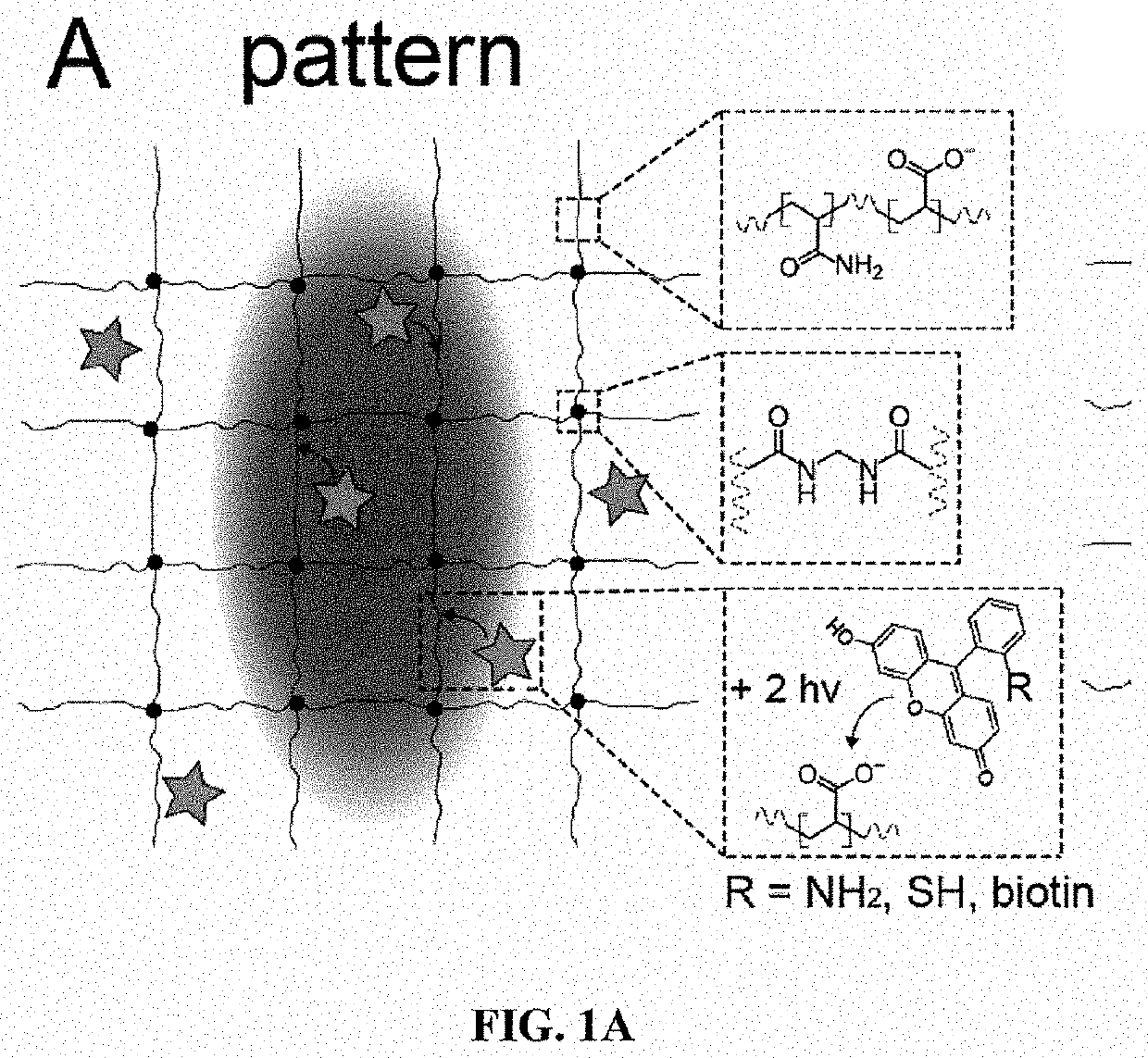Three-dimensional nanofabrication by patterning of hydrogels
- Summary
- Abstract
- Description
- Claims
- Application Information
AI Technical Summary
Benefits of technology
Problems solved by technology
Method used
Image
Examples
examples
[0053]As used herein, the term “swellable material” generally refers to a material that expands when contacted with a liquid, such as water or other solvent. Preferably, the swellable material uniformly expands in three dimensions. Additionally or alternatively, the material is transparent such that, upon expansion, light can pass through the material. Preferably, the swellable material is a swellable polymer or hydrogel.
[0054]Polyelectrolyte hydrogels are well known for their ability to expand and shrink up to ˜10-fold in linear dimension in response to changes in temperature, pH, salt concentration, or electric field strength.10,13 Gel expansion was recently shown to preserve, with nanometer precision, the three-dimensional arrangement of molecules covalently bound to a gel matrix, likely due to the fine mesh size (˜1-2 nm) of such polymer gels14-16. The question of whether gel shrinkage could achieve fine resolutions was assessed, following covalent attachment of materials to tar...
PUM
| Property | Measurement | Unit |
|---|---|---|
| Shrinkage | aaaaa | aaaaa |
| Semiconductor properties | aaaaa | aaaaa |
| Resolution enthalpy | aaaaa | aaaaa |
Abstract
Description
Claims
Application Information
 Login to View More
Login to View More - R&D
- Intellectual Property
- Life Sciences
- Materials
- Tech Scout
- Unparalleled Data Quality
- Higher Quality Content
- 60% Fewer Hallucinations
Browse by: Latest US Patents, China's latest patents, Technical Efficacy Thesaurus, Application Domain, Technology Topic, Popular Technical Reports.
© 2025 PatSnap. All rights reserved.Legal|Privacy policy|Modern Slavery Act Transparency Statement|Sitemap|About US| Contact US: help@patsnap.com



